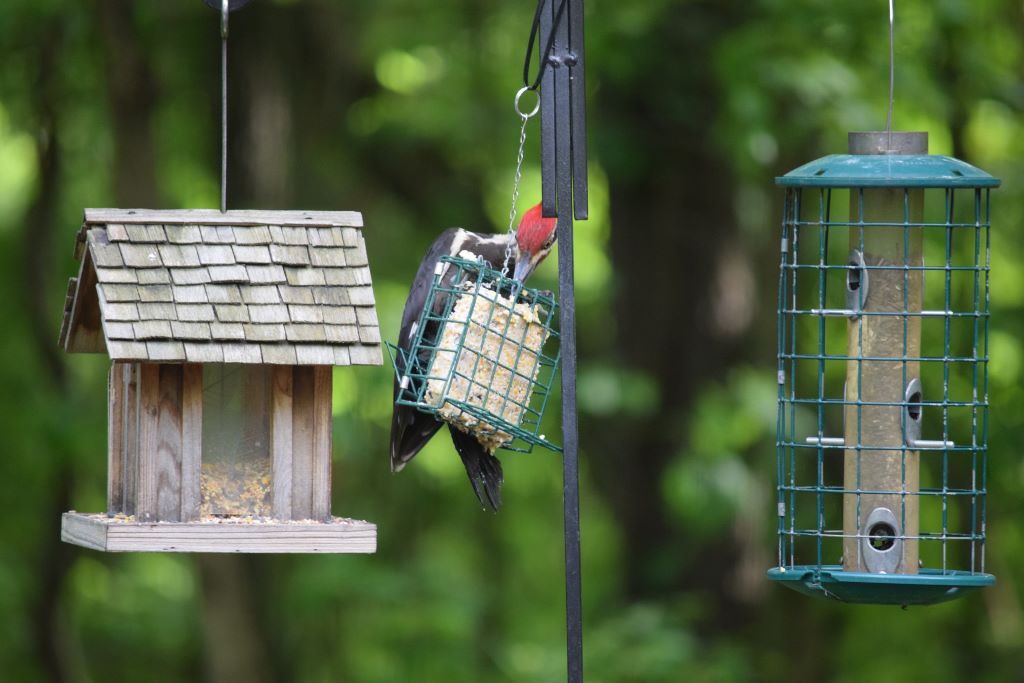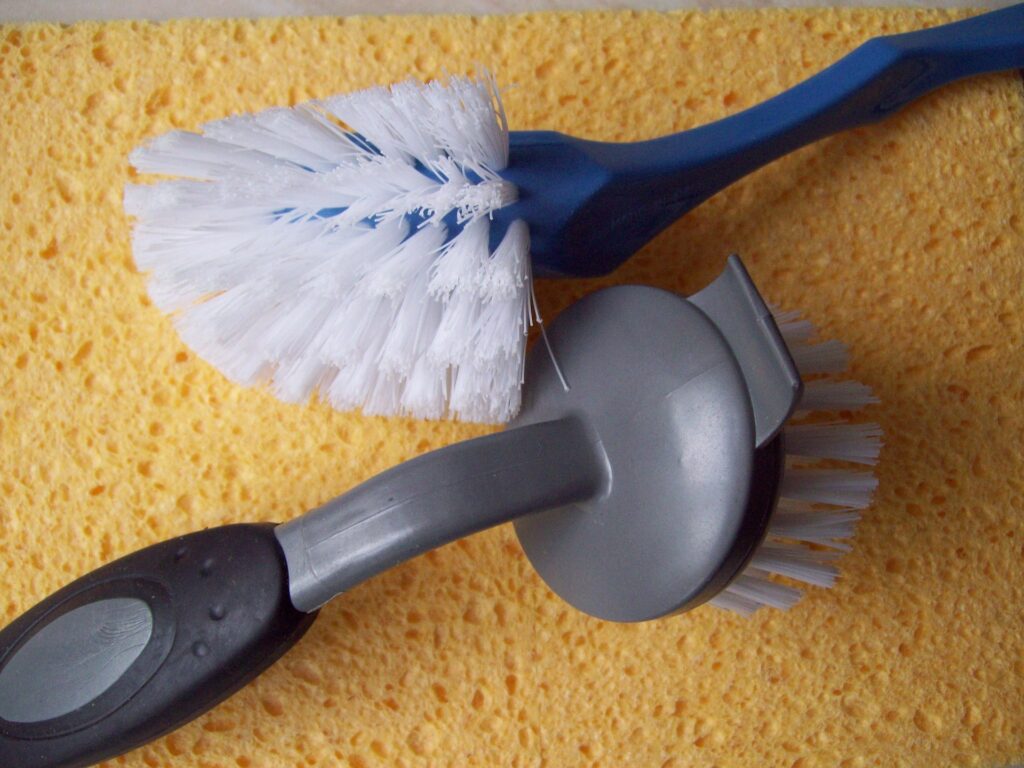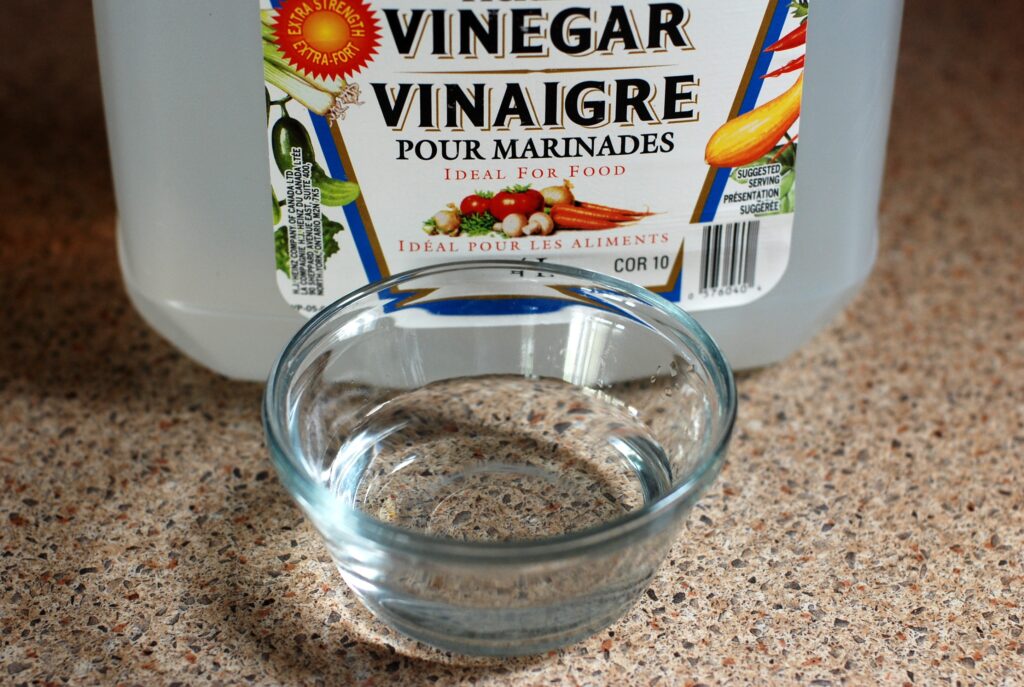Spring cleaning? Add your bird feeders to your list! And if you haven’t already, now’s a good time to get into the habit of regularly cleaning out your bird feeders. Why is it important to clean your feeders? Should you use soap and water or other cleaners? How often should you clean them? We’ll answer these questions, and more, here.
How Often Should You Clean Your Bird Feeders?
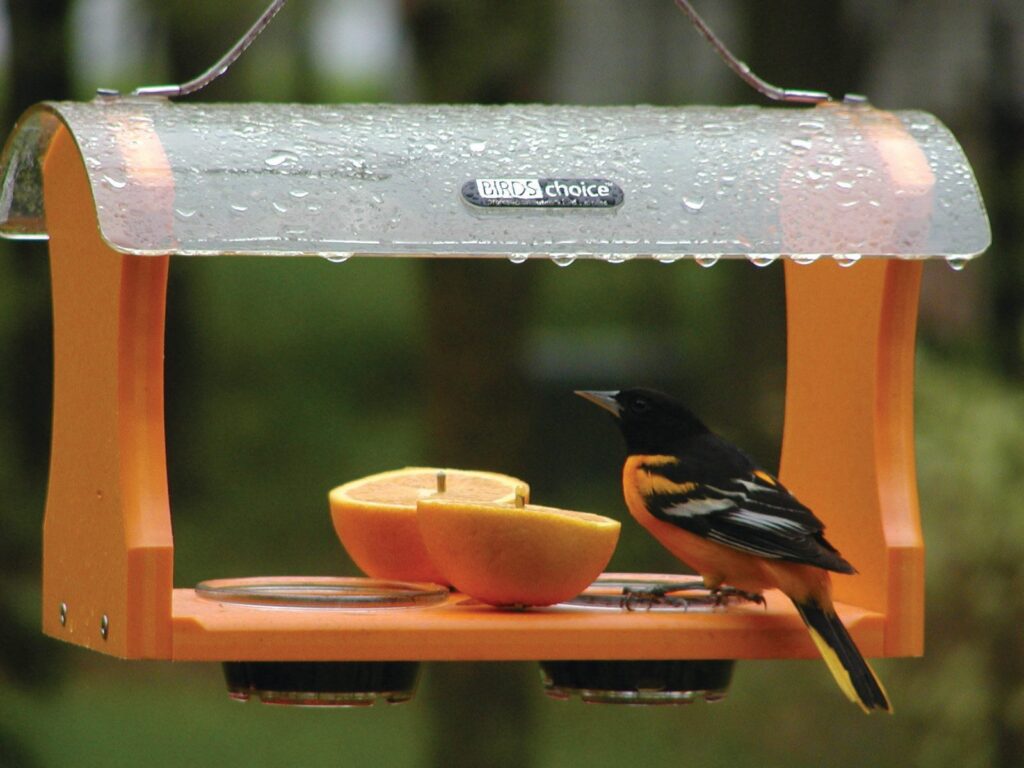
The National Audubon Society recommends cleaning your bird feeders once or twice a month, and more often in wet or hot, humid weather. Hummingbird feeders should be cleaned more regularly—once a week, and more often in hot weather. A good practice is to have a second cleaned and filled feeder that replaces the first empty feeder, which you can then clean at your leisure.
Why Should You Clean Your Bird Feeders Regularly?
The main reason to keep your feeders squeaky clean is to prevent the spread of bird diseases. Wet, moldy bird seed, bird droppings, and harmful bacteria can make birds sick, even fatally. And dirty bird feeders also attract insects, mice, and other rodents. This is why it’s also important to clean under your feeders as well—fallen seed quickly becomes moldy or spoiled, and birds might feed on this ground seed. Plus, this scattered seed attracts pests you don’t want in your yard or home.
What Should You Use to Clean Your Bird Feeders?
Use a three-to-one water-vinegar solution or a nine-to-one water-bleach solution to clean your feeders. And non-toxic bird feeder-cleaning solutions can also be used. Wear rubber gloves and use a stiff brush or old toothbrush to clean all the components of the feeder. You may also wish to let the feeder soak in the solution afterwards. After cleaning, thoroughly rinse the feeder with hot water and let it dry before refilling.
Here’s a step-by-step guide on how to clean your bird feeder from Droll Yankees:
Bird Feeder Cleaning Dos and Don’ts
Now that we’ve covered the basics of cleaning your feeders, here are a few more tips and tricks of what (and what NOT) to do:
DO consider buying easy-to-clean bird feeders. Look for a feeder like the 24-in. Clever Clean Tube Bird Feeder, which has a twist-and-release base that gives you full access for easy cleaning. The Original Dr. JB’s 16-oz. Clean Hummingbird Feeder is another good choice—with a wide-mouth jar and removable parts so you can clean every crevice thoroughly. Some feeders, like this one, even let you throw it into the dishwasher—talk about easy!
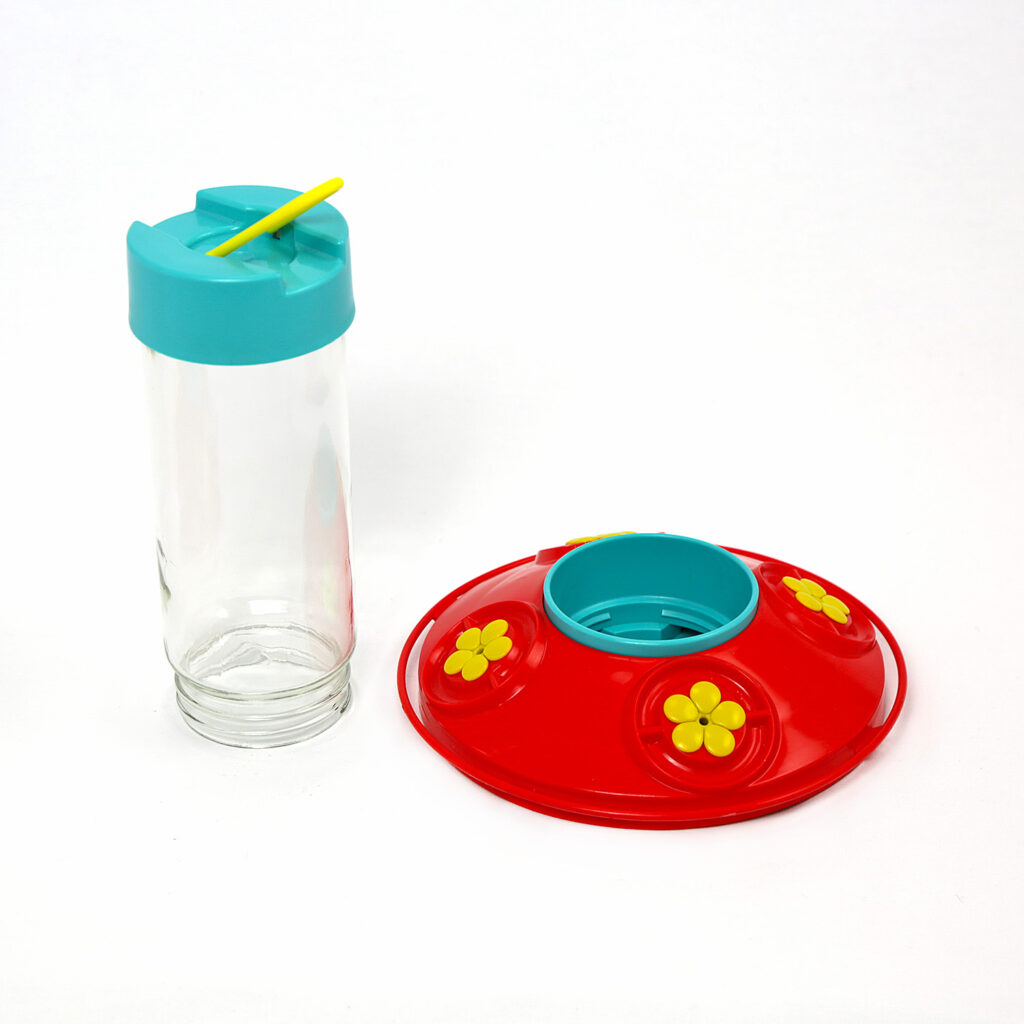
DO soak your feeders to remove fat buildup. The good news? High-quality bird seed mixes, like our proprietary Big Bear Blend and suet have the fat and protein birds need to migrate long distances, survive long winters, and raise their young. The bad news? The high fat content can cause grease buildup on your feeder. To counteract this, simply soak your feeder in hot, soapy water for at least 15 minutes before scrubbing it thoroughly with a vinegar-water or bleach-water solution. Soaking is also important for suet feeders and mesh feeders, to remove the greasy residue left behind from high-fat suet and nuts.
DO disassemble your feeders before cleaning. Harmful bacteria can hide in the smallest of cracks, so it’s important to disassemble your feeder before cleaning it. Remove and clean ports, perches, bases, and all parts before reassembling and refilling.
DO dry your cleaned feeder in the sun. If possible, put your newly cleaned feeder out in the sunlight to dry it. This will help break down any remaining bacteria or chemicals.
DON’T ignore birdbaths, poles, brackets, ropes, chains, and baffles. Just like your feeders, these also need to be cleaned regularly. Use the same cleaning frequency and solution that you use on your feeders to keep these tidy and disease-free.

DON’T let fruit go rotten in fruit feeders. Check your fruit bird feeders daily for signs your fruit pieces are spoiling or molding. If so, remove the rotten fruit and immediately clean your feeder.
DON’T ignore sick or dead birds in your yard. If you find one or more dead birds in your yard, or if you observe a bird that seems lethargic or otherwise ill, it could point to a bigger problem. Your seed mix may have spoiled, or bacteria from your seed or your feeder itself may be making your local birds sick. It’s a good time to check your seed for mold, insects, larvae, and other telltale signs it’s gone bad. Make sure that you are storing your bird seed properly, and if not, follow these tips to keep your seed fresh. If you think you might have a bigger issue on your hands, such as the recent Salmonellosis outbreak affecting migrating Pine Siskins in Northern California, simply take your feeders and baths down for a week or two to stop the spread. And of course clean and sanitize your feeders while you take a break from feeding.
Chirp’s Free Feeder Cleaning Event
Clean feeders are important, but not always convenient, so Chirp wants to help. We offer a free Bird Feeder Cleaning Event each Spring. Just drop your feeders off at Chirp, and we will process them through our special cleaning and sanitizing process. Easy, and clean! Find out more details here.

